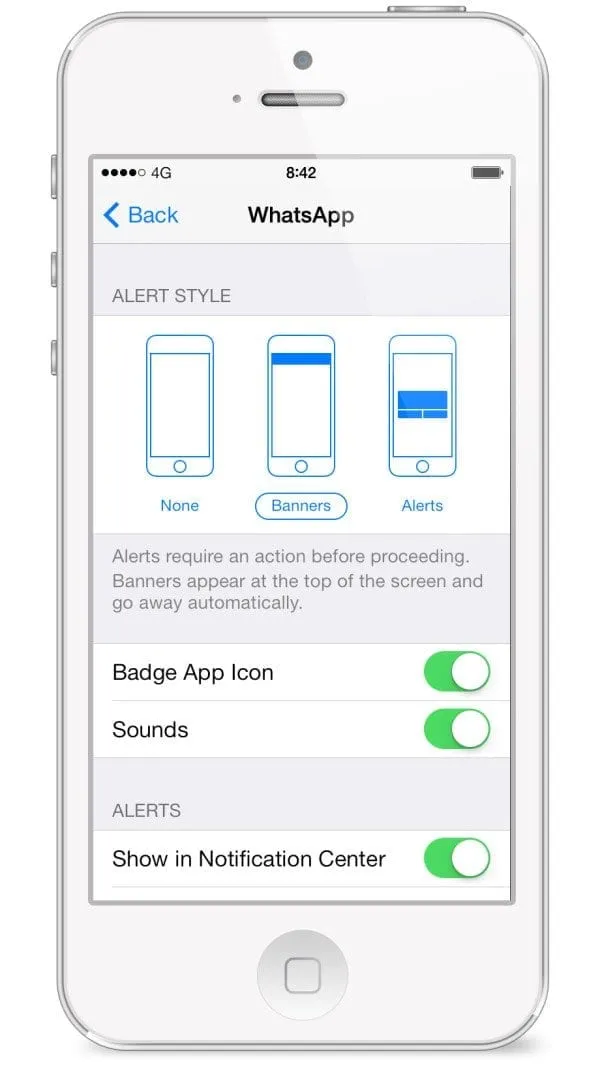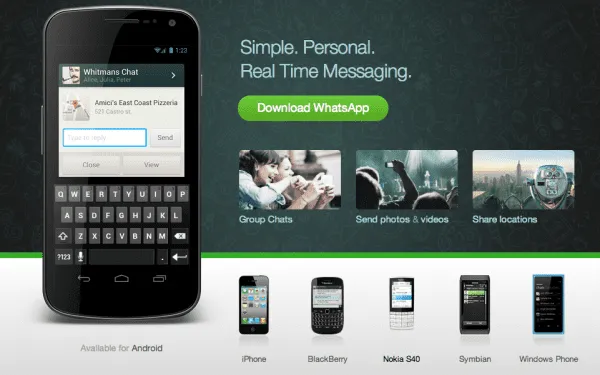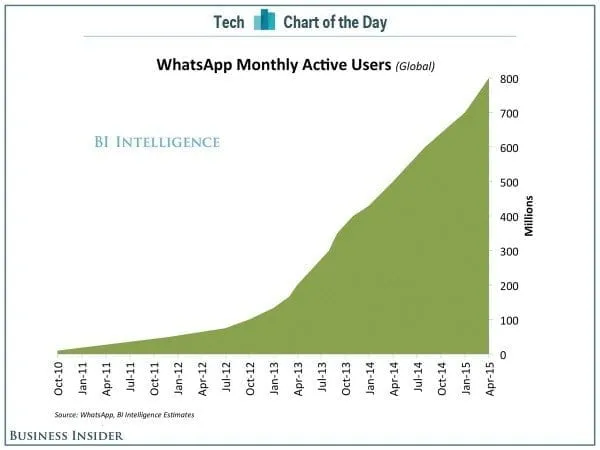
Instead of just having a list of contacts, what if there were statuses next to the names? This is what led ex-Yahoo employee Jan Koum to the inception of WhatsApp in 2009. Without any second thoughts, he named the app after the ultimate conversation starter “what’s up?”, and it made total sense.
But the question remains, how did an app that barely did any marketing acquire over 900 million global users and get Facebook to purchase them for 19 billion dollars, just five years after it was launched?

Started as an iPhone-only app, it was when Apple launched the push notifications feature in June 2009 that Koum discovered people responded more whenever they get notified that a friend changed their status on WhatsApp. Koum then released WhatsApp version 2.0 with a messaging functionality and his active users spiked to 250,000. According to an exclusive interview with Forbes Tech:
“At some point it sort of became instant messaging,” says [Alex] Fishman [Koum’s Russian friend]. “We started using it as ‘Hey how are you?’ And then someone would reply.”
Jan watched the changing statuses on a Mac Mini at his town house in Santa Clara, and realized he’d inadvertently created a messaging service. “Being able to reach somebody half way across the world instantly, on a device that is always with you, was powerful,” says Koum.”

WhatsApp was first launched on the App Store in November 2009 and shortly became multi-platform supporting all Android, Blackberry, Blackberry 10, iPhone, Nokia S40, Nokia S60 and Windows phones.
Koum shared to Apple Insider,
“WhatsApp is a modern-day communications tool, which is made more effective given its cross-platform capabilities.”
While other popular messaging apps started adding stickers and animations, WhatsApp focused on its core functionality that is the SMS-like messaging, making the service better known as a text-replacement service.
WhatsApp lets anyone create an account with just a mobile number. Once you’re on WhatsApp, you can easily see which of your contacts are also on the platform and send them a message through just their mobile number, no complicated user IDs and passwords necessary. We learned this to be “the power of product focus,” according to this MindTheProduct article:
“This makes WhatsApp perhaps the clearest example of the success of single-minded product focus. From day one they have focused on making the best messaging app and every feature and improvement that has followed has been in service of that goal. When they introduced voice messaging in 2013 it was a simple extension of the existing messaging tools, with a supremely simple one-click implementation that bested the combined efforts of Google, Facebook and Twitter.”
Only after gaining a lot of traction did it start supporting voice calls, a strategic means of addressing the need for cheaper communication alternatives in developing countries. This make sense as a huge chunk of its users are outside of the U.S.
It is beyond doubt that a lot of people loved WhatsApp for not having ads. Koum in fact has been very vocal about WhatsApp’s manifesto opposing advertising despite being the messaging app category’s top source of revenue.
One year after the Facebook-WhatsApp acquisition was announced, everyone’s waiting if WhatsApp will join Facebook and Instagram in serving ads. According to VentureBeat, Facebook Chief Financial Officer David Wehner revealed in May 2015 that Facebook is indeed is looking into business-to-consumer (B2C) interaction on WhatsApp:
“Like Messenger, WhatsApp would likely introduce permission-based functionality that prevents brands from sending messages without obtaining approval from the consumer."
If Messenger’s B2C messaging is any indication, there will continue to be no push (i.e. interruption) advertising in WhatsApp, allowing the app to preserve its “no ads, no games, no gimmicks” mantra. This is why the talk of Facebook backtracking on its claims to keep WhatsApp ad-free is misguided and fails to take into account the nuances of permission-based messaging. I would imagine that WhatsApp users who want to keep their experience brand-free will be able to do so. But the services Facebook could introduce into WhatsApp would add such value that many would opt in to B2C messaging.”
Some brands have still decided to build a messaging app that fosters seamless conversations, and it can be a great idea to grow your business, while other smaller brands have decided to leverage WhatsApp Business API functionalities to interact with their customers.

For some reason, WhatsApp seems to be getting a lot of good PR... or are they simply good at seeding the right content?
Remember, reporters and bloggers have a very short attention span. You have to pitch them the right story that is relevant to their audience for them to dedicate time writing about you.
Top-rated marketing book Traction tells us what gets a reporter’s attention:
In April 2015, Business Insider released the news regarding WhatsApp’s latest milestone - how it just added another 100 million new users in 4 months! Guess where they picked up the news?
“WhatsApp cofounder and CEO Jan Koum said through his Facebook page last Friday that the messaging app now has more than 800 million monthly active users. That’s an additional 100 million new MAUs in just 4 months.”
Five months later, Koum did it again - this time announcing 900 million users and even tagging Facebook founder and CEO Mark Zuckerberg.
WhatsApp now has 900 million monthly active users.
Posted by Jan Koum on Thursday, September 3, 2015
Living in this social media age can also mean that making product announcements can be as easy as posting a status update on the company’s official blog or the founder’s Facebook page. In WhatsApp’s case, Koum shared the news on his Facebook page, which Zuckerberg liked and reshared. It was well played.
Congrats to Jan, the WhatsApp team and whole community on reaching 900 million people!
Posted by Mark Zuckerberg on Thursday, September 3, 2015
Looking back, WhatApp did play its cards well that we barely see its efforts as some marketing ploy. Instead, WhatsApp focused on having a really good product and an equally as good distribution channel that made it become the messaging app you can’t not have.
Photo Credit: Techspective.net Digital Trends, Useronboard, Facebook
_____
Read Next: How Snapchat Grew Into A $10b+ Social Media Behemoth Through Word-of-Mouth
With over five years of experience in the tech and social media space, Christine now believes that there is an app for literally everything. Watching geeky shows or reading about that newly-launched app keeps her up at night.
Grow your sales at a ridiculously
lower CAC.